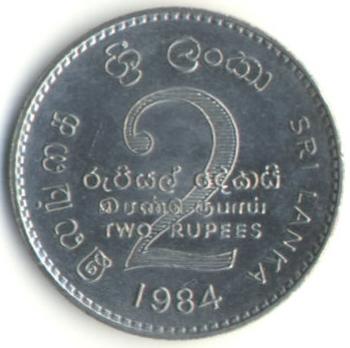Contents:

metlife inc common demutualization that demutualize convert from member to inventory ownership and can select a wide range of options to do so. As a shareholder in the demutualized company, you may now be entitled to share in the company’s profits via stock dividends, and benefit from its growth in the form of an appreciated share price. Your shares may be sold at any time, without affecting policy benefits. Each companies plan of conversion defines which policyholders are entitled to receive compensation, and there are differences among them. Eligible policyholders generally include those whose policies are paid-up and in force on or before the date of demutualization, and their heirs. MetLife challenges Plaintiffs’ claims related to actuarial contributions and the projected IPO price of MetLife stock.

Shares that were allocated to eligible policyholders as a result of the demutualization are held in the MetLife Policyholder Trust (the “Trust”) in book entry form. These shares are held electronically with Computershare as custodian of the Trust. Metlife, Inc. was created via demutualization on April 5, 2000. At that time, policyholders could receive cash in lieu of stock at $14.25 a share.
What is MetLife Inc demutualization PA?
Farmers Insurance Group completed it’s purchase of MetLife’s auto and home books of business on April 8, 2021. Farmers acquired MetLife policies as is, with no immediate intentions on changing the policy terms of existing MetLife customers to match those of current Farmers policies. Demutualization has its advantages and disadvantages for policyholders. However, if eligible, policyholders will receive financial benefits from the process. Additionally, policyholders are at the mercy of the mutual board. That means the board dictates how much of the profits should be paid to the policyholders and how much should be kept in reserve.
The Trust Interests represent undivided fractional interests in the Trust Shares and other assets of the Trust beneficially owned by a Trust Beneficiary through the Custodian. On April 7, 2000, the date of demutualization of Metropolitan Life, MetLife Inc. distributed to the Trust 494,466,664 shares of Common Stock for the benefit of policyholders of Metropolitan Life. Beneficiaries may withdraw all, but generally not less than all, of their allocated shares of Common Stock from the Trust at any time by providing written notice to the Custodian. On April 7, 2000, Metropolitan Life made the conversion from a mutual life insurance company to a stock life insurance company. Over eleven million policyholders became eligible to receive trust interests representing shares of common stock held in the Metropolitan Life Policyholder Trust, cash, or an adjustment to their policy values in the form of policy credits.
9 Places to Find Free Money – Kiplinger’s Personal Finance
9 Places to Find Free Money.
Posted: Tue, 23 Jun 2020 10:18:47 GMT [source]
The Stockholm Stock Exchange was the first exchange to demutualize in 1993, followed by Helsinki , Copenhagen , Amsterdam , the Australian Exchange and Toronto, Hong Kong and London Stock Exchanges in 2000. The Chicago Mercantile Exchange became a shareholder-owned public corporation in 2000 through a public offering. There are three general methods in which an organization might demutualize, full demutualization, sponsored demutualization, and into a mutual holding company . In any type of demutualization, insurance policies, outstanding loans, etc., are not directly affected by the organization’s change of legal form. Commencing August 15, 2000 at an annual rate of 8.00% of the stated liquidation amount of $50.00 per capital security.
Irish grocer-owned retailers’ cooperative, ADM Londis, changed its capital structure in 2004 to an unlisted public limited company, allowing its owners to trade its stock privately at market value. SIX Group, a global financial service provider based in Switzerland, represents an extra ordinary form of a mutualised organisation. The owners are limited to an exclusive group of service consumers, in particular Swiss and foreign banks. This entails a closer relationship with the customer, since a customer might influence the customer-oriented behavior by the magnitude of its own equity holding of SIX Group – in this category the subsidiary SIX Swiss Exchange AG. Metropolitan Life and its subsidiaries (the “Company”) is a leading provider of insurance and financial services to a broad section of institutional and individual customers.
e. Alleged failure to disclose distribution of fixed component to all policyholders
The monetary services sector is very competitive, and even the strongest of corporations must adapt to changing circumstances if they’re going to thrive. The question of whether MetLife had other reasons than the disclosed reason for not pursuing a Method 2 demutualization is more nebulous. The reason stated in the PIB is somewhat vague, and Plaintiffs’ allegations of the “real” reasons for not pursuing Method 2 are not well substantiated by the factual record. MetLife provides convincing evidence that Method 2 would not have worked and would have been untenable for a variety of reasons. However, the undisputed evidence could possibly lead a reasonable person to question the weight given to the analysis by the Chief Actuary, and raises the question of the materiality of the omission of further information related to Method 2. Under the reasonable person standard which this Court must apply, we cannot say that minds could not differ on the materiality of omitted information with regard to the choice of demutualization method.
By 1930, MetLife insured one of five men, women, and children in the United States and Canada. During the 1930s, it also began to diversify its portfolio by reducing the percentage of individual mortgages in favor of public utility bonds, investments in government securities, and loans for commercial real estate. The company financed the Empire State Building’s construction in 1929 as well as provided capital for Rockefeller Center’s construction in 1931. During World War II, MetLife placed more than 51 percent of its total assets in war bonds and was the largest single private contributor to the Allied cause. As in many large, public corporations, MetLife has a compensation committee which establishes compensation levels for the company’s senior executives; MetLife compensation emphasizes “variable performance-based compensation over fixed or guaranteed pay”.
The difference is that the mutuality is essentially bought by a stock corporation. Instead of receiving stock in the formerly mutual company, stock in the new parent company is granted instead. In June 1999, the Financial Accounting Standards Board issued Statement of Financial Accounting Standards No. 137, Accounting for Derivative Instruments and Hedging Activities–Deferral of the Effective Date of FASB Statement No. 133 (“SFAS 137”).
Def.’s Statement of Material Fact ถ 152; Ex. Plaintiffs dispute the accuracy and the completeness of the above quoted statements as alleged in their complaint. Pl.’s Response ถ 152; Plaintiffs Second Amended Complaint, Dkt. MetLife assert that Plaintiffs do not allege that the dispute is material or and do not cite evidence supporting their contentions.

Pursuant to the demutualization plan, life insurance policyholders maintained their existing insurance policies, and kept their existing benefits, cash values and dividend eligibility. Policyholders received all of the stock from the initial public offering, or in a small number of instances, cash or policy credit. As part of the demutualization, policyholders gave up their membership interests in the mutual corporation, which included the right to vote on matters submitted to them and the right to receive a portion of the surplus in the event that MetLife was liquidated. The Court has already determined that the allocation of stock in this matter constitutes a purchase or sale under the federal securities laws. In the most well-liked, a full demutualization, the company unbundles policyholders’ fairness and possession, giving them both cash, inventory or policy credit.
MetLife Demutualization Litigation
It redistributes some profits to its members. By contrast, a https://1investing.in/ company raises capital from its shareholders and other financial sources in order to provide services to its customers, with profits or assets distributed to equity or debt investors. In a mutual organization, therefore, the legal roles of customer and owner are united in one form (“members”), whereas in the joint stock company the roles are distinct. This allows a broader capital base if the customers cannot or will not provide sufficient financing to the organization. However, a joint stock company must also try to maximize the return for its owners instead of only maximizing the return and customer services to its customers.

This study is still the largest available pool of data for this purpose. It was noticed that the average weights in the population are higher than the ideal weights for survival. The ‘’’Metropolitan Tables’’’ included ‘’small’’, ‘’medium’’ and ‘’large’’ frames, based on elbow-girth measured using calipers, as the elbows do not develop adipose tissue. They presented weight ranges for height, sex and body frame The midpoint of the ideal weight for the medium frames for each height was selected as the “ideal” weight used for calculations of “excess weight” . This led to a formula to calculate the ideal weight used by bariatric surgeons, but it had lost considerable accuracy by 2007, again due to improvements in medical care and in public health.
What is the cost basis for Prudential stock?
The cheque is against the financial benefits from demutualization of Economical Mutual Insurance Company. So, it is not a scam as only the eligible policyholders received the cheque. Manufacturers Life Insurance Company – Manulife – On September 24, 1999, Toronto, Canada-based Manufacturers Life Insurance Company’s demutualized and became Manulife Financial. Only 35% of the company’s 671,000 eligible policyholders worldwide voted. If you elected to receive cash instead of stock in the tax-free reorganization, you are deemed to have received the shares of stock and then to have sold them back to the corporation (i.e., redeemed your shares). This may result in capital gain reportable on Form 1040, Schedule D , Capital Gains and Losses, and on Form 8949 , Sales and Other Dispositions of Capital Assets.
- The consensus among Wall Street equities research analysts is that investors should “hold” Brighthouse Financial stock.
- These debentures are unsecured and rank equally in right of payment to all other senior unsecured debt of MetLife, Inc.
- No changes are planned at this time, but if a reinvestment program is instituted, all eligible shareholders will be notified of the option.
- By 2000, MetLife’s reported number of policyholders had risen to 11 million, and that year it had become the United States’ number one life insurer, surpassing Prudential, according to The New York Times.
- Shares may be sold at any time, without affecting policy benefits.
Yet there was no sign of concern among MetLife policyholders. If you are registered for our Electronic Funds Transfer payment program, you will generally receive the funds in your account within 1-3 business days. If you request a check, you will generally receive it within 3-5 business days. My mom has a very small amount that will likely just sit until last thing ever sold, or inherited by us kids which resets the cost basis to the day we inherit for us and solves the problem. As far as the brokerages are concerned, they’re non-covered shares which means they didn’t track the cost-basis.
It looks like they could have been sold free at ComputerShare. The firm had requested approval for a US$2,000,000,000 share repurchase to prop up the inventory worth, along with an elevated dividend. Because MetLife owned MetLife Bank, it was subject to stricter monetary regulation.
- Demutualization is when a mutual insurance company becomes a publicly traded company that shares joint stocks.
- It is recommended that you mail the certificate using Registered Mail to the address listed below.
- For many policyholders, the windfall arising from demutualization can be substantial, but millions of missing policyholders and heirs aren’t aware they are entitled to receive compensation.
Def.’s Statement of Material Fact ถ 144; Hynes Decl. Giannattasio has received $682.60 in cash dividends on the MetLife, Inc. common stock held in the Trust on his behalf. Def.’s Statement of Material Fact ถ 145; Hynes Decl. The price of MetLife, Inc. common stock on the New York Stock Exchange, as of the close of the market on April 3, 2008, was $62.01.
According to the OECD, MetLife Foundation’s financing for 2019 development increased by 20% to US$14 million. Opened joint-venture insurance company in Shanghai, in May 2006. The company’s head offices and boardroom are located at the MetLife Building at 200 Park Avenue in Midtown Manhattan and New York City which MetLife owned from 1981 to 2005; despite the sale, MetLife increased its leased footprint in the building beginning in 2015. Public offering, the price of an Equitable common share increased 123%. The UK motorists’ organization, The Automobile Association, demutualized and was purchased by Centrica plc in 1999. The sale was completed in July 2000 for £1.1 billion.
Eligible policyholders will be compensated in the form of cash, newly issued shares of common stock, or policy credits in exchange for their membership interests. Demutualization is a process by which a private, member-owned company, such as a co-op, or a mutual life insurance company, legally changes its structure, in order to become a public-traded company owned by shareholders. Demutualization is a course of by which a private, member-owned firm, similar to a co-op, or a mutual life insurance coverage firm, legally adjustments its construction, to be able to turn into a public-traded company owned by shareholders.

Recent price changes and earnings estimate revisions indicate this would not be a good stock for momentum investors with a Momentum Score of F. If your shares are held on the UK Register, you can log onto Equiniti Shareview where you will be able to check your details, including your shareholding, dividend payments and various transactions. The service is secure, free and easy to use. On the other hand, metlife website says under FAQ to put the cost basis as zero, but maybe they just don’t want to get sued lol!
